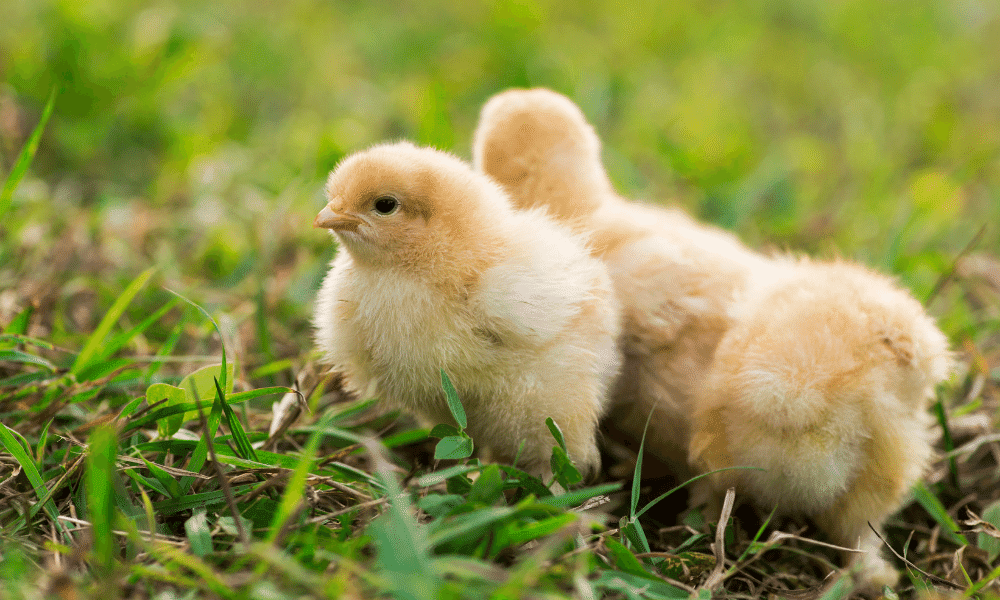Anatomy of a Chicken: Chicken Anatomy, Rooster Anatomy, and Health Guide
A Guide to Chicken Anatomy and Health
Understanding the intricacies of chicken anatomy and the potential health issues your chicks may encounter is pivotal for their overall well-being. This guide is designed to help you learn about the anatomy of a chicken and their essential functions. From the intricacy of the beak down to the functionality of their feet, and from the significance of the crop to the efficiency of the vent, we’re exploring the critical roles each body part plays in their daily lives.
We're going to talk about some common health issues that your fluffy little chicks might face while exploring the anatomy of a chicken. We’re talking about the tools and knowledge you need to identify and manage conditions like cross beak, club feet, spraddle leg, slipped tendon, and pasty butt. That way, you can be sure your chicks are getting the best care possible.
Our aim is to help you create a happy and healthy environment for your chicks. By learning about chicken anatomy and staying alert to potential health problems, you'll be able to give your chicks all the support they need to grow and thrive.
Get ready for a fun and engaging journey through the world of chicken and rooster anatomy, where you'll learn how to prevent common issues. It's time to become a confident and knowledgeable chick owner - let's get started!
Beak
The beak of a chick is instrumental in its feeding habits. It is designed for pecking and consuming food. An ideal beak is petite and straight, allowing for complete closure.
Cross Beak or Scissor Beak
Understanding the anatomy of a chicken, starting with the beak, helps diagnose conditions like cross beak or scissor beak. This condition occurs when the upper and lower parts of a bird's beak grow in opposite directions, making it difficult for the bird to close its beak properly. To help the affected bird, it may be necessary to make some changes like using a deeper feeding bowl or preparing a softer food. Online support groups such as those found on Facebook can be a great source of advice and shared experiences. In severe cases, where the bird cannot be integrated into a flock, culling may be considered as the most humane option.
It's crucial to note that birds with cross beaks should not be bred, as this genetic condition demands specialized care.
Avian Beak Necrosis
Avian beak necrosis is a condition where the tissue of a bird's beak deteriorates. This can lead to severe deformation or the loss of the beak. The condition can be caused by nutritional deficiencies, exposure to environmental stressors, or bacterial infections. Symptoms include discoloration, brittleness, and abnormal growth or loss of beak tissue.
To manage and prevent avian beak necrosis, early intervention is crucial. Providing a balanced diet that is rich in essential nutrients, maintaining clean and stress-free living conditions, and implementing biosecurity measures to prevent infection are essential strategies. Consulting with an avian veterinarian is necessary for diagnosis and treatment. Treatment may include antibiotics, dietary adjustments, and, in some cases, surgical intervention to remove necrotic tissue.
Feet, Legs, and Claws
The anatomy of a chicken’s feet, legs, and claws plays a crucial role in walking and perching. Chickens use their feet, legs, and claws for various activities such as walking, scratching, foraging, and perching. The number of digits may vary depending on the breed, and some breeds may also have leg fluff. When walking, the digits should lie flat on the ground.
Condition: Club feet are among the possible foot-related conditions. While club feet may or may not affect a chick's ability to walk and perch, they can be remedied by creating a small cast-like shoe to help flatten the feet and enable proper walking. It is essential to initiate this treatment as soon as possible, as it can typically correct the condition within 5-7 days, depending on its severity.
Treatment: To create a cast, cut out a piece of cardboard slightly larger than the size and shape of the foot. Then, place the foot flat on top of the cardboard cutout. Using materials like blue painters tape, vet wrap, or masking tape, wrap the foot and cardboard together, forming a small cast for the chick. During the first few days, the chick may require extra assistance with eating and drinking. If there are multiple chicks in the brooder, it may be necessary to separate the affected chick with a few companions in a smaller brooder to avoid accidental trampling.
Condition: Spraddle Leg or splay leg is a condition where a chick cannot stand up properly. One or both legs are splayed out to the side, making it difficult for them to regain an upright position.
Treatment: Spraddle leg can be treated in various ways. One method involves using a band-aid, placing the bandage part in the middle and wrapping the stock part around each leg. Alternatively, you can use string, chick bands, or specific splay leg fixers available online. The brace or fixer should remain on for at least 5 days, after which the condition should be reassessed for improvement. If necessary, adjustments can be made. Similar to the treatment for club feet, it may be necessary to separate the affected chick with a few companions in a smaller brooder to ensure they can eat and drink without being trampled. With a correctly fitted brace, the chick should be able to start walking upright within a few days.
Condition: Slipped Tendon, also known as perosis, is typically caused by a slippery surface in the brooder or incubator, although it can also be due to a vitamin deficiency. Slipped tendon occurs when the tendon slips out of alignment with the hock joint.
Treatment: Correcting slipped tendon involves gently pulling the leg straight, aligning the tendon, and firmly wrapping it with vet wrap. Care should be taken not to wrap too tightly, as it could restrict circulation. If the tendon remains in place for a few days, it should heal without any permanent deformities.
Marketplace
You might also be interested in...

Shop for chickens, livestock or other farm goods

About Farm Expo Events

Sell Your Chicks and Eggs
Crop
The Crop: Your Chicken’s Cozy Food Nook
Imagine the crop as a cozy little food nook located right on your chick’s chest, a fascinating part of their chicken anatomy. It’s essentially a pre-stomach, holding food and water temporarily before the big move to the gizzard. As your chick pecks away happily throughout the day, the crop gets a workout, expanding with each delicious bite. You can tell a lot about your chick's dining habits just by feeling the crop. A squishy crop? That means they’ve been hitting the water dish hard. A firm and plump crop signals a well-fed, content chick, ready for a good night’s sleep.
It’s crucial for their little crops to be full at bedtime, ensuring they wake up ready to tackle the new day. Feeding them anything beyond the basics? Remember to sprinkle in some chick grit to aid digestion. But if you’re sticking to crumbles, no worries—those are easy peasy for them to break down.
Eyes, Nares, and Ears
The sparkling eyes, curious nostrils (nares), and attentive ears of a chick are more than just adorable features; they're clear indicators of good health. Sometimes, the hatching process can be a bit of a sticky situation, literally. You might find their little eyes shut tight or a bit of gunk caught in there.
Here’s the Fix: A gentle swipe with a damp paper towel can work wonders. Hold it softly against the affected area, offering a soothing touch as you work to free any debris. And if there's a need for a bit more cleaning power, a pet-safe eye wash can come to the rescue. Most times, a little tender care is all it takes to clear the way for those bright eyes to explore the world anew.
Comb and Wattles
Two distinctive features of chickens that play significant roles in their daily lives are the comb and wattles. The comb is the red appendage on the top of the chicken's head, while the wattles are the two dangling appendages under the chicken's chin. These body parts are not just for show; they serve essential functions, including thermoregulation and a role in mating rituals. Blood flow through the comb and wattles helps chickens regulate their body temperature, releasing heat in warm weather. Additionally, a vibrant comb and wattles are often signs of good health and vitality, making them attractive to potential mates.
Condition: Fowl Pox
Fowl Pox is a viral disease that can affect the comb and wattles, among other parts of a chicken's body. It presents in two forms: dry and wet. The dry form is characterized by wart-like lesions on the comb, wattles, and sometimes around the eyes and beak. These lesions can cause discomfort but are generally not fatal. However, they can lead to secondary infections if not managed properly. The wet form affects the respiratory system, leading to lesions in the mouth and throat, and can be more serious.
Treatment and Prevention
Prevention is the best approach to managing Fowl Pox. A vaccine is available and is particularly recommended for flocks in areas where Fowl Pox is common. If a chicken does contract Fowl Pox, supportive care is crucial. This includes keeping the affected areas clean and applying a mild antiseptic. Ensuring the chicken has a stress-free environment and access to clean water and nutritious food will also support its recovery. In the case of secondary infections, antibiotics prescribed by a veterinarian may be necessary. However, antibiotics do not treat the viral infection itself.
Vent
The vent is the final part of the digestive system, the area where chickens excrete their droppings and lay eggs. Checking the vents of your chicks daily during their early weeks is of utmost importance. Regular checks on the vent, a vital part of the anatomy of a chicken, can prevent conditions like pasty butt.
Condition: Pasty butt is a condition where droppings clump and stick to the chick's vent, obstructing its ability to defecate. If left untreated for too long, the chick may stop eating and drinking, leading to death within a few days. Regularly checking the vents is crucial to prevent this.
Treatment: If you notice a chick with pasty butt, gently wash the affected area with warm water. Afterward, dry the chick and apply coconut oil or olive oil to help prevent the droppings from sticking. If multiple chicks have this issue, consider potential environmental causes such as excessive heat, lack of water access, overcrowding, or failure to thrive. Adjustments may be necessary, such as adjusting the temperature in the brooder, providing ample water, or ensuring proper conditions for growth and development.
Understanding chicken anatomy and being aware of potential health conditions are crucial for the well-being of your chicks. By learning about their body parts and common ailments like cross beak, club feet, spraddle leg, slipped tendon, and pasty butt, you can provide appropriate care and ensure their optimal health.
Stay observant, regularly check their beaks, feet, crops, eyes, vents, and other body parts, and promptly address any issues that arise. Connect with support groups and communities for advice and shared experiences.
With your knowledge, nurturing environment, and attentive care, you are equipped to raise happy and healthy chicks. Enjoy the journey of being a confident and well-informed chick owner!
Disclaimer: The information provided in this blog post, including but not limited to treatments for specific conditions affecting chickens, is for educational and informational purposes only. Roobeez and this post's author do not guarantee these treatments' effectiveness for every individual or situation. While we strive to share knowledge that can help chicken owners care for their flocks, we are not veterinary professionals. The contents of this blog, including any advice, suggestions, and recommendations, are not intended to substitute professional veterinary advice, diagnosis, or treatment. Always seek the advice of a qualified veterinarian or poultry health professional with any questions you may have regarding the health and well-being of your chickens. Roobeez and the contributors of this blog will not be liable for any outcomes, damages, or losses resulting from the direct or indirect application of any information presented herein. Your reliance on any information provided in this blog is solely at your own risk.
The fun doesn’t have to end here.
Become a free Roobeez member for unlimited access to these features + more!
The Learning Library 📚
Get your hands on informational guides and expert advice on topics like livestock, homesteading, farming, small business, and more.
The Online Marketplace 🛒
Shop directly from your local small farms and artisans. As a seller, enjoy free advertisement and a dedicated storefront.
Exclusive Events 🎟️
Find local farm & homestead-related events. Experience the joy of local community connection!
You might also be interested in…















Discover farmers markets near you with Roobeez! Explore local events, find seasonal and weekly markets, and shop fresh produce and handmade goods on our marketplace. Contribute to our growing directory by adding your favorite markets and community events. Supporting local has never been easier!